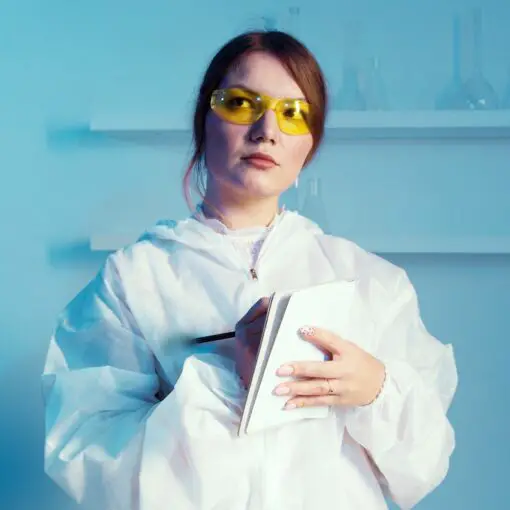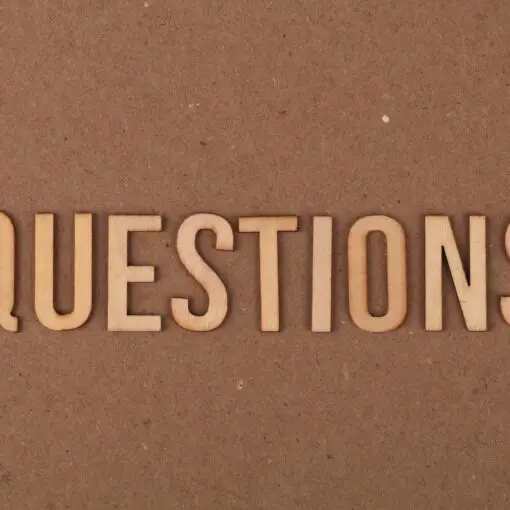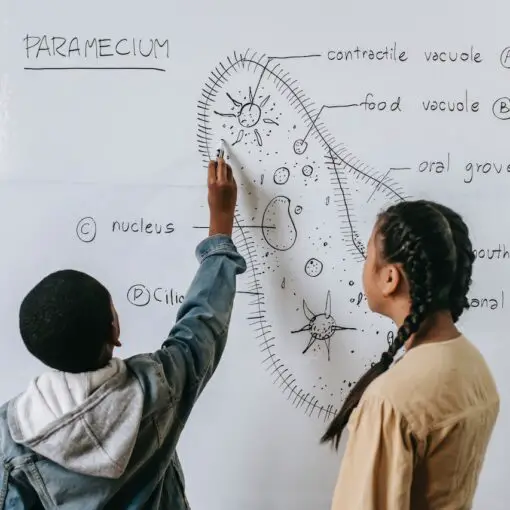Scientific thinking is a vital skill in today’s world, helping us unravel the mysteries of the natural and physical world around us. This approach involves using systematic and logical processes to investigate questions, test hypotheses, and establish facts. By honing our scientific thinking skills, we become better equipped to solve problems, make informed decisions, and foster our curiosity about the world.
Examples of scientific thinking can be found in various aspects of our daily lives. From simple tasks such as troubleshooting a malfunctioning toaster to more complex situations like analyzing the validity of a news article, the principles of scientific thinking enable us to systematically approach problems, weigh evidence, and draw conclusions. By understanding the process of scientific thinking, we can cultivate a mindset of inquiry that promotes critical thinking, analytical reasoning, and intellectual growth in our everyday experiences.
Scientific Thinking in Everyday Life
Scientific thinking isn’t just reserved for scientists in lab coats; it’s a useful method to process information and make informed decisions in everyday life. In this section, we will explore two essential components of scientific thinking: Observation and Data, and Asking Questions and Forming Hypothesis.
Observation and Data
Observations are made using our senses, such as sight, sound, touch, taste, and smell. We gather data from these observations to analyze situations and make decisions. For instance, when we cook food, we observe the color, smell, and texture to determine if it’s properly cooked. Similarly, we may notice that our plants look wilted, which suggests they need more water.
In everyday life, we can utilize data to make informed choices. For example, comparing prices, customer reviews, and specifications of two smartphones can help us decide which model to purchase. Additionally, by understanding the nutritional information on food labels, we can make healthier choices for our body.
Asking Questions and Forming Hypothesis
Asking questions is a crucial aspect of scientific thinking. It allows us to clarify our understanding of a situation and to find solutions to problems. In everyday life, we may ask questions like, “Why did my electricity bill increase this month?” or “How can I save money on groceries?”
Once we have identified a question, we can form a hypothesis – a possible explanation for an observed phenomenon or an educated guess for the outcome of a specific situation. For example, the increased electricity bill may be due to faulty wiring, more devices consuming energy, or higher electricity rates.
With a hypothesis in mind, we can then gather more data, test the hypothesis, and modify it if necessary. This process of scientific thinking helps us make logical decisions and improve our understanding of the world around us.
By consistently incorporating observation, data analysis, asking questions, and forming hypotheses into our daily lives, we develop a more structured and rational approach to problem-solving. As a result, we become more confident, knowledgeable, and effective in making decisions that impact our everyday lives.
The Scientific Method
The scientific method is a systematic approach used to investigate and gain knowledge about the natural world. It typically involves a series of steps: forming hypotheses and predictions, conducting experiments and testing, controlling variables, and drawing conclusions based on evidence.
Hypotheses and Prediction
A key element of the scientific method is the formation of hypotheses. These are educated guesses or assumptions about a particular phenomenon. Based on the research and prior knowledge, scientists try to predict the outcome of their investigation. These predictions help determine what the experiment should test and how it should be structured.
Experiment and Testing
Once a hypothesis has been formed, the next step is to design and conduct an experiment to test it. This crucial step involves collecting data and observing the effects of various variables on the outcome. A well-designed experiment should be able to produce consistent and reliable results, allowing scientists to confirm or refute their initial assumptions.
Control and Variables
In an experiment, there are typically two types of variables: independent and dependent variables. The independent variable is the factor that is deliberately manipulated by the researcher, while the dependent variable is the one that is measured or observed as a result of the independent variable’s manipulation.
To ensure the integrity of the experiment, scientists often use control groups that remain untouched by the independent variable. This helps to establish a baseline for comparison and to determine if the results are truly due to the manipulation of the independent variable or are caused by other factors.
Conclusion and Evidence
Upon the completion of an experiment, researchers analyze the data collected and draw conclusions based on the evidence. They might confirm, modify, or refute the initial hypothesis. The process doesn’t end here, though. Scientists often iterate and refine their experiments to further test their hypotheses or explore new aspects of the phenomenon under investigation.
By following the scientific method, researchers can gain a confident, knowledgeable, and neutral understanding of the world around them. This clear and systematic approach fosters the continuous advancement of scientific knowledge and helps us better comprehend the complex and ever-evolving world we live in.
Scientific Thinking in the Natural World
Scientific thinking, an approach to gain knowledge and understanding, plays a crucial role in various disciplines such as chemistry and physics, as well as the development of natural laws and theories. By observing phenomena in the natural world, scientists work to validate their hypotheses and draw accurate conclusions.
Chemistry and Physics
Chemistry and physics are fundamental branches of science that implement scientific thinking in their respective studies. In the realm of chemistry, scientists examine the composition, structure, properties, and changes of matter. Through observations, they’re able to formulate hypotheses and conduct experiments to understand chemical reactions at the atomic and molecular levels.
Similarly, physics focuses on understanding the fundamental principles governing the physical world. Physicists employ scientific thinking to investigate the forces and interactions between matter and energy. By conducting experiments and analyzing empirical data, they develop theories and laws that describe the behavior of various particles and systems, from subatomic particles, like electrons and protons, to larger astronomical bodies.
Natural Laws and Theories
Through rigorous observation, experimentation, and validation, scientists discover natural laws and theories that govern the natural world. Unlike a hypothesis, a natural law is a well-established and widely accepted principle based on extensive empirical evidence. An example of a natural law is Newton’s law of universal gravitation, which elucidates the forces between two objects with mass.
A theory, on the other hand, is a well-developed and substantiated explanation for a particular phenomenon based on accumulated evidence. Theories undergo continuous refinement as new evidence emerges. The atomic theory, for instance, began as a philosophical concept and, through ongoing experimentation and observation, developed into our current understanding of the structure and properties of atoms.
By employing scientific thinking in observing the natural world, unraveling the mysteries of chemistry and physics, and formulating natural laws and theories, we continue to advance our understanding of the universe and build upon previous knowledge.
Challenging Assumptions
In the realm of scientific thinking, challenging assumptions plays a crucial role in ensuring the validity and reliability of conclusions drawn from research and experiments. An assumption is an unexamined belief that forms the basis of our inferences or conclusions, often without us realizing it. To maintain a rigorous scientific process, it is essential to question these assumptions, as they can sometimes be incorrect or misguided [^1^].
The process of challenging assumptions in scientific thinking involves a continuous cycle of scrutinizing and reevaluating beliefs and perspectives. This thorough approach helps identify potential pitfalls and contradictions in the data as well as uncovering alternative explanations that might have been overlooked. By doing so, it enables researchers to refine their hypotheses and enhance their overall understanding of the subject matter.
Here are some steps that can be followed when challenging assumptions in scientific thinking:
- Identify the assumptions: First and foremost, it is necessary to recognize the assumptions being made in the research or experiment. These can range from those related to the data’s accuracy to the underlying principles governing the phenomenon under investigation.
- Evaluate their validity: Once the assumptions have been identified, it is essential to assess their accuracy, relevance, and strength. This involves conducting a thorough analysis to ensure that they are grounded in reality and not based on prior misconceptions, bias, or personal beliefs.
- Consider alternate perspectives: Challenging assumptions also entails exploring various viewpoints and explanations that might contradict or disprove the initial assumptions made. By considering these alternative scenarios, researchers can gain a more comprehensive understanding of the subject and increase the robustness of their conclusions.
- Revise and refine: If the assumptions are found to be faulty or inadequate, it is important to reevaluate and adjust them accordingly. This might involve revising the research questions or experimental design, which in turn will contribute to the generation of more informed and reliable conclusions.
In conclusion, challenging assumptions is an integral part of the scientific thinking process, ensuring that researchers maintain a critical, confident, and evidence-based approach in their work. By regularly questioning and reassessing beliefs and perspectives, scientists can develop a more accurate and comprehensive understanding of their subject matter, ultimately leading to more reliable knowledge and innovation.
Application in Research and Articles
Scientific thinking plays a crucial role in research and article writing. By adopting a systematic approach, researchers can make informed decisions, refine their hypotheses, and identify the most suitable methods to answer questions. The process begins by identifying a problem and conducting background research to develop a more precise research question.
Once the research question is established, scientists plan and execute experiments, carefully observing and recording the results. This requires a clear understanding of the required variables and control measures to ensure that any patterns or trends discovered are accurate and replicable.
Researchers then analyze their findings to draw conclusions and identify areas where further experiments are needed. One of the key aspects of scientific thinking is the ability to remain open-minded and adaptable to new information, ensuring that conclusions are based on evidence and not personal biases.
In article writing, the use of scientific thinking ensures that the information presented is accurate, logical, and well-organized. The scientific thinking process helps writers critically assess their sources, evaluate data, and synthesize information to create cohesive and informative articles.
Besides its application in research, scientific thinking can also be observed in everyday life, where individuals apply their sense of curiosity to understand the world around them. For example, an individual might conduct an experiment to test whether a certain method is the most effective way to manage a problem or learn a skill. By relying on logical deductions and empirical evidence, scientific thinking serves as a powerful tool for researchers, writers, and individuals alike.
Scientific Thinking for Informed Decisions
Scientific thinking is a valuable tool that can be applied to everyday life to make informed decisions. By adopting a scientific mindset, we can approach problems and situations by asking the right questions, testing our assumptions, and adjusting our understanding based on evidence. This systematic way of evaluating information enables us to make decisions backed by logic and evidence, rather than relying on intuition or guesswork.
To begin with, it is essential to ask questions that clarify the situation or issue at hand. By identifying the specific aspects of the problem to be addressed, we can focus on gathering relevant information to make a well-informed decision. Adopting a curious and inquisitive attitude ensures that we are open to learning and improving our understanding.
After asking questions, the next step in scientific thinking is to form a hypothesis. A hypothesis is an educated guess based on existing information that can be tested through experimentation or observation. Formulating hypotheses allows us to consider possible explanations or solutions to a problem, providing a starting point for further investigation.
As we formulate hypotheses, it is vital to acknowledge our assumptions. Recognizing the inherent biases and preconceived notions we may harbor helps us ensure that our conclusions are grounded in evidence rather than in misconceptions. By continuously scrutinizing and challenging our assumptions, we refine our decision-making process.
In the pursuit of making informed decisions, we should strive to gather evidence to support our hypotheses. Collecting data, testing ideas, and analyzing results are crucial steps in verifying the validity of our proposed explanations or solutions. The process of evaluating evidence to substantiate or refute hypotheses enables us to eliminate flawed ideas and focus on the most convincing options.
To summarize, scientific thinking plays a crucial role in making informed decisions by encouraging us to ask questions, form hypotheses, test assumptions, and seek evidence in support of our ideas. By applying this systematic approach to problem-solving, we can make choices rooted in rationality and evidence, leading to better outcomes in our personal and professional lives.
Frequently Asked Questions
What are the key elements of scientific thinking?
Scientific thinking involves several key elements that help individuals make sense of their surroundings and learn about the natural and physical world. These elements include observation, critical questioning, background research, hypothesis formulation, experimentation, data analysis, and communication of results. These steps help ensure that the scientific method is followed consistently to gather accurate and reliable knowledge.
How can scientific thinking be applied in everyday life?
Applying scientific thinking in everyday life is an effective way to make informed decisions, problem-solve, and remain curious about the world around us. By being observant, asking critical questions about the things we observe, conducting research, forming hypotheses, and testing our ideas, we can gain new insights and knowledge. This approach can help us when making decisions about our health, finances, environment, or even simple household tasks.
What are some examples of scientific thinking in the classroom?
In the classroom, scientific thinking can be encouraged through various activities that promote the development of critical thinking skills. These activities can include group projects, debates, experiments, and presentations on scientific topics. For instance, students can observe a phenomenon, ask questions, research and discuss the topic, formulate hypotheses, conduct experiments, analyze results, and draw conclusions to enhance their understanding and application of scientific concepts.
How do different types of scientific thinking influence problem-solving?
Different types of scientific thinking, such as inductive reasoning, deductive reasoning, experimental design, causal reasoning, and hypothesis testing, play significant roles in problem-solving. Each type of thinking has its strengths and weaknesses in addressing specific problems. By employing various approaches, individuals can develop a comprehensive understanding of the issue, explore multiple perspectives, and identify the most effective solution.
How can scientific thinking help business leaders?
Business leaders can benefit from applying scientific thinking in their decision-making and problem-solving processes. By systematically gathering and analyzing data, identifying patterns, developing hypotheses, and testing their validity through experimentation, leaders can make more informed decisions that result in better outcomes. In addition, fostering a culture of scientific thinking within an organization encourages innovation, critical thinking, and data-driven decision making, leading to increased efficiency and long-term success.
What role does logic play in the process of scientific discovery?
Logic plays a vital role in the process of scientific discovery. It provides a structured framework for making inferences, reasoning, and drawing conclusions based on empirical evidence. In science, deductive and inductive reasoning are the two main types of logic employed by researchers to analyze available information and formulate new insights. Logic is an essential component of scientific thinking as it facilitates clear, precise, and unbiased understanding of complex phenomena.





